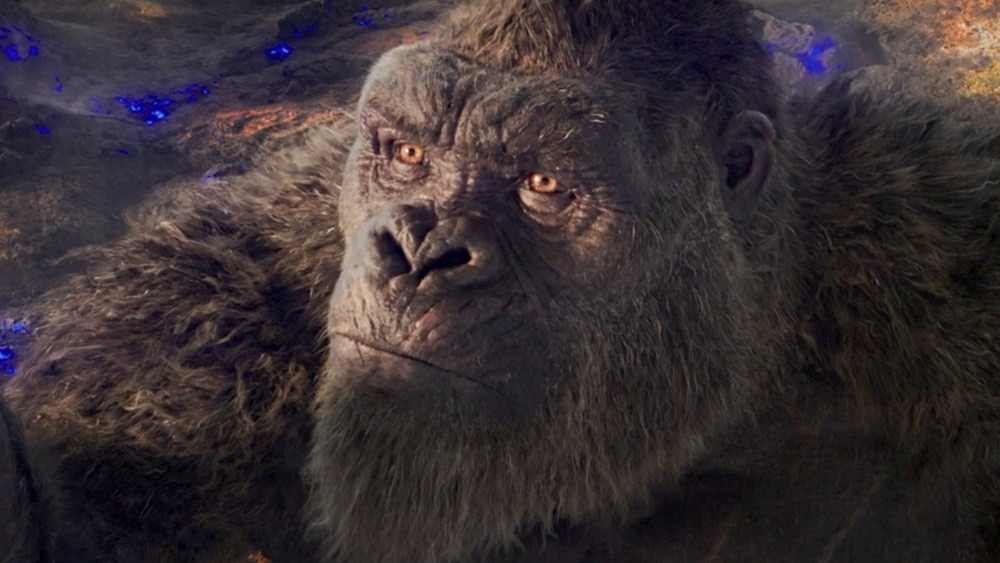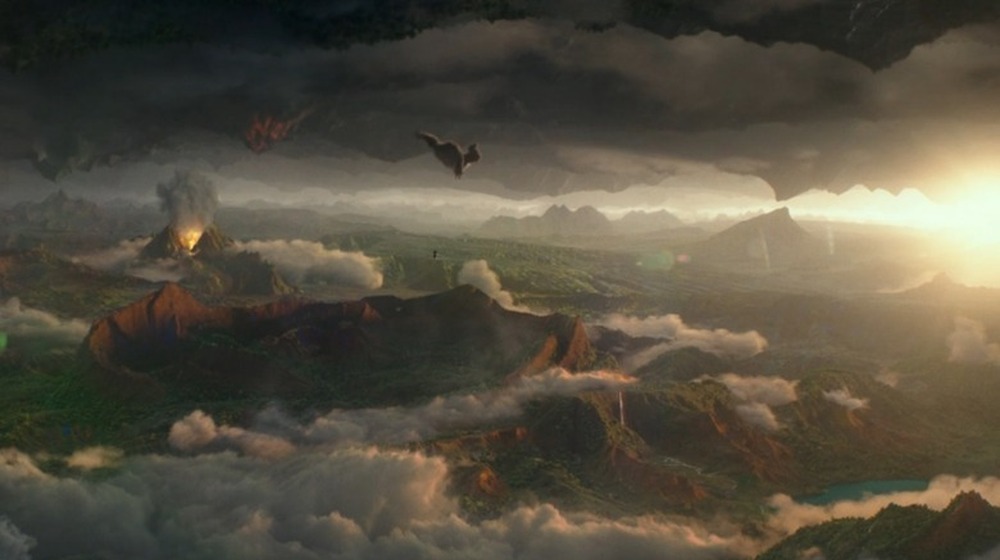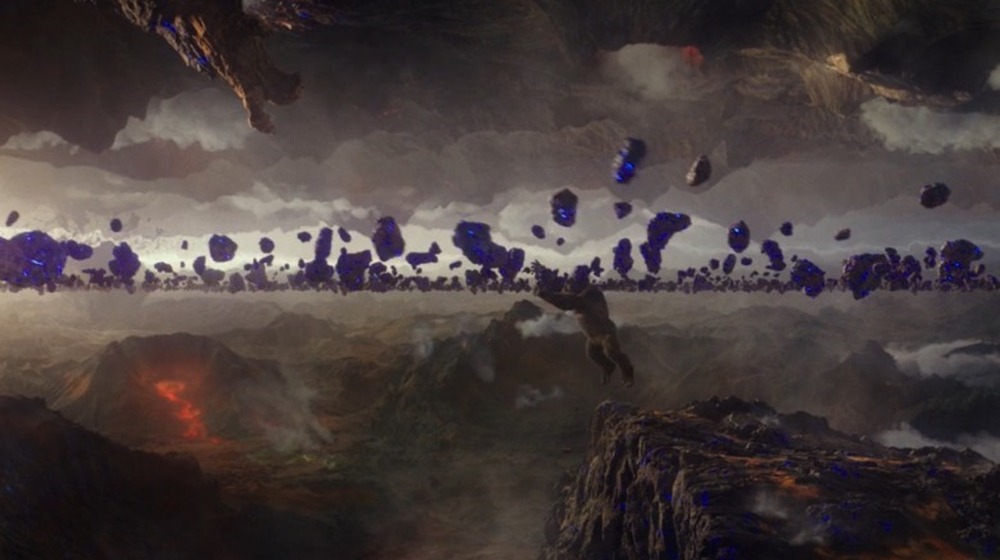Why The Gravity In Godzilla Vs. Kong's Hollow Earth Makes No Sense
Way back in the 17th century, astronomer Edmond Halley postulated that the Earth is hollow and inside its shell rests another, second Earth, complete with its own oceans, continents, and sun. Modern science knows such a world, dubbed Hollow Earth, is as probable as a 300-foot atomic-fire-breathing lizard — but since Godzilla such a creature in fictional media, Hollow Earth has been made the MonsterVerse's radioactive home for everything kaiju. Audiences get their first look at the inner world in this year's Godzilla vs. Kong, featuring a unique (and disorienting) gravitational behavior.
In Godzilla vs. Kong, Hollow Earth is a physical palindrome: The ceiling is the floor, and the floor is the ceiling, and each have their own gravitational pull. The idea makes for a trippy experience. To better understand Hollow Earth, Looper reached out to Dr. Jed Macosko, Ph.D., Professor of Physics at Wake Forest University, and asked if such a place would be feasible. According to Dr. Macosko, Hollow Earth as depicted in Godzilla vs. Kong is as impossible as, well, a giant gorilla fighting a giant reptile in the real world. Think of gravity as an honorary movie plot hole.
If Earth were truly hollow, interior gravity would be nonexistent
Before Godzilla vs. Kong's cast of humans can visit Hollow Earth, they need to pass through a protective gravitational barrier that can only be punctured by specialized Apex Cybernetics shuttles known as HEAVs. Once beyond that barrier, the movie's characters experience what is called a "gravitational inversion," where gravity suddenly flips for them. This doesn't sit well with Dr. Jed Macosko, as he told Looper that gravity is subject to symmetries that would preclude such an event.
According to Dr. Macosko, "If the Earth was truly a hollow skin, as soon as you poked through the outer layer of mass, you would be immediately weightless." It doesn't matter where you start because the pull — or lack thereof on the other side — is uniform throughout, and mass on one end of the shell is balanced out by mass on the other side.
However, this doesn't preclude the possibility of a Hollow Earth, just one where you can walk on the floor and ceiling. Dr. Macosko believes that a Hollow Earth is feasible if it were a "planet within a planet." Picture Earth as a Matryoshka nesting doll: Humans live on the outer doll, and all the residents of Hollow Earth live on the inner doll. As Dr. Macosko explained, "There is a gap of air between the two dolls. In fact, the dolls don't need to touch each other because the inner doll doesn't feel the pull of the outer doll's gravity due to the symmetry argument mentioned above."
In other words, if Godzilla burned a hole into Hollow Earth with his atomic breath and roared down at Kong, the giant gorilla couldn't roar in response by shouting at the ground — he would have to yell at the ceiling.
Gravity would be weaker on Hollow Earth than on Outer Earth
In Godzilla vs. Kong, Hollow Earth has the same gravity as Earth's surface. This should make sense since the force of gravity on an object is F = m*g, where m is the mass of said object and g is the gravitational acceleration, or 9.8 m/s². However, g is only 9.8 m/s² on the Earth's surface. As Dr. Jed Macosko explained to Looper, the closer you are to a planet's core, the lower the gravitational acceleration, and since Hollow Earth is closer to the core, it would be subject to lower gravitational pull.
To illustrate this point, Dr. Macosko discussed drilling into the Earth. When you start on the surface, gravitational acceleration is the standard 9.8 m/s². According to Dr. Macosko, halfway to the Earth's core, you would only be subject to 4.9 m/s² acceleration.
Moreover, these calculations carry over to Dr. Macosko's hypothetical Matryoshka Earth. Since gravity would be lower in that more realistic Hollow Earth, it would affect, say, how high Kong can jump. "If Kong jumps four times higher inside Hollow Earth than on the surface of the Earth, it means that gravity is half the normal value, and the radius of the inner planet is half that of the Earth's," he explained.
Basically, Godzilla vs. Kong missed a prime opportunity to let characters hop around on Hollow Earth as if they were on the Moon. That would have been far more realistic. Still, as Dr. Macosko put it, "Physics is fun, and thinking about the physics implications of your favorite movie only adds to the enjoyment of the film." Well said.


